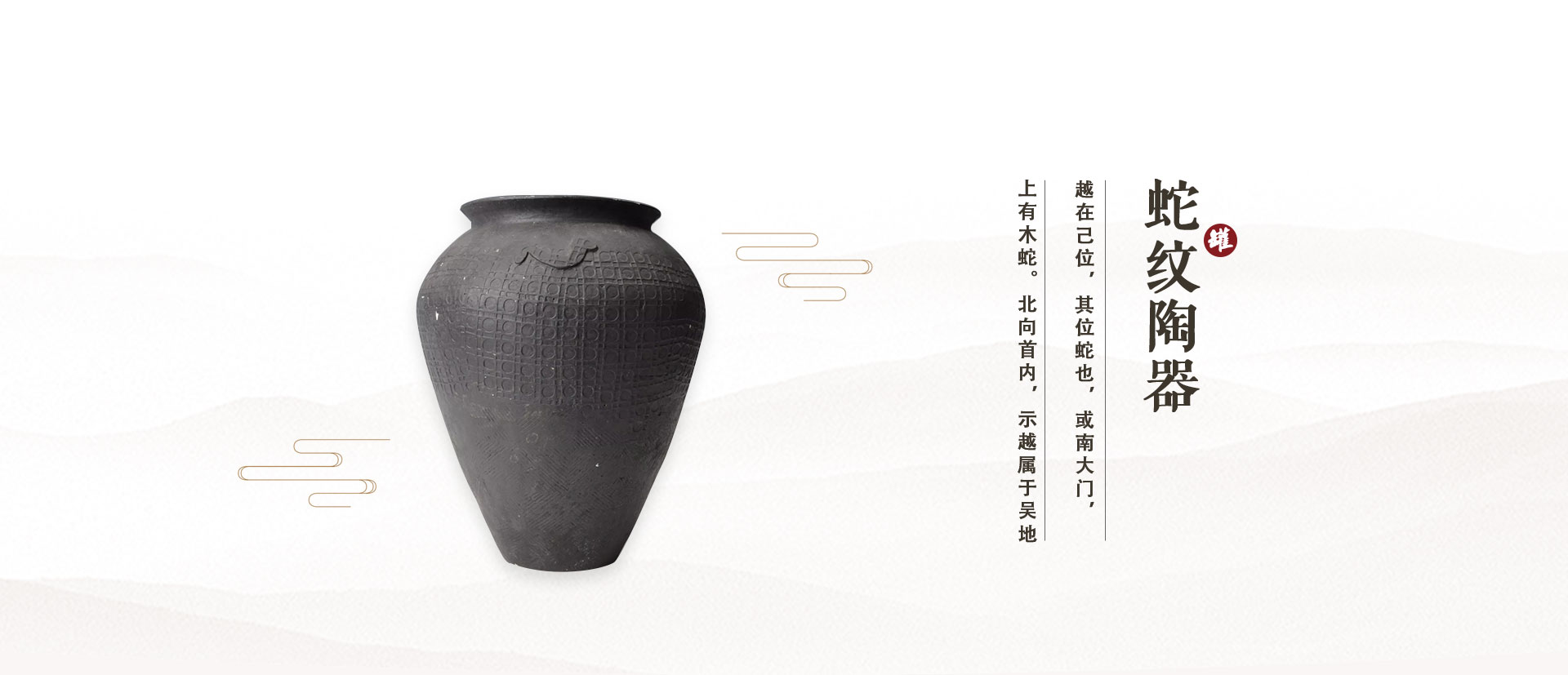角山窑址是我国迄今为止发现最早的专业性陶器生产基地。除陶制品外,还有大量的陶拍、陶垫、陶支架等制陶工具。
Jiaoshan kiln site is the earliest professional pottery production base found in China so far. In addition to pottery products, there are also a large number of pottery-making tools such as pottery pats, pads and supports.
陶拍,用来拍印器表纹饰。有的为扁长方形拍面,扁椭国形的把,有的为伞装拍面,圆柱形的把手。一般两面均有纹样,或云雷纹、篮纹、或叶脉纹、席纹,等等。
Pottery pats are used for patting and printing ornamentation. Some are flat rectangular pat face with a flat oval handle, some are umbrella pat face, with cylindrical handle. Generally, there are patterns on both sides, such as cloud and lightning patterns, vertical stripe patterns, leaf vein patterns, and mat patterns.
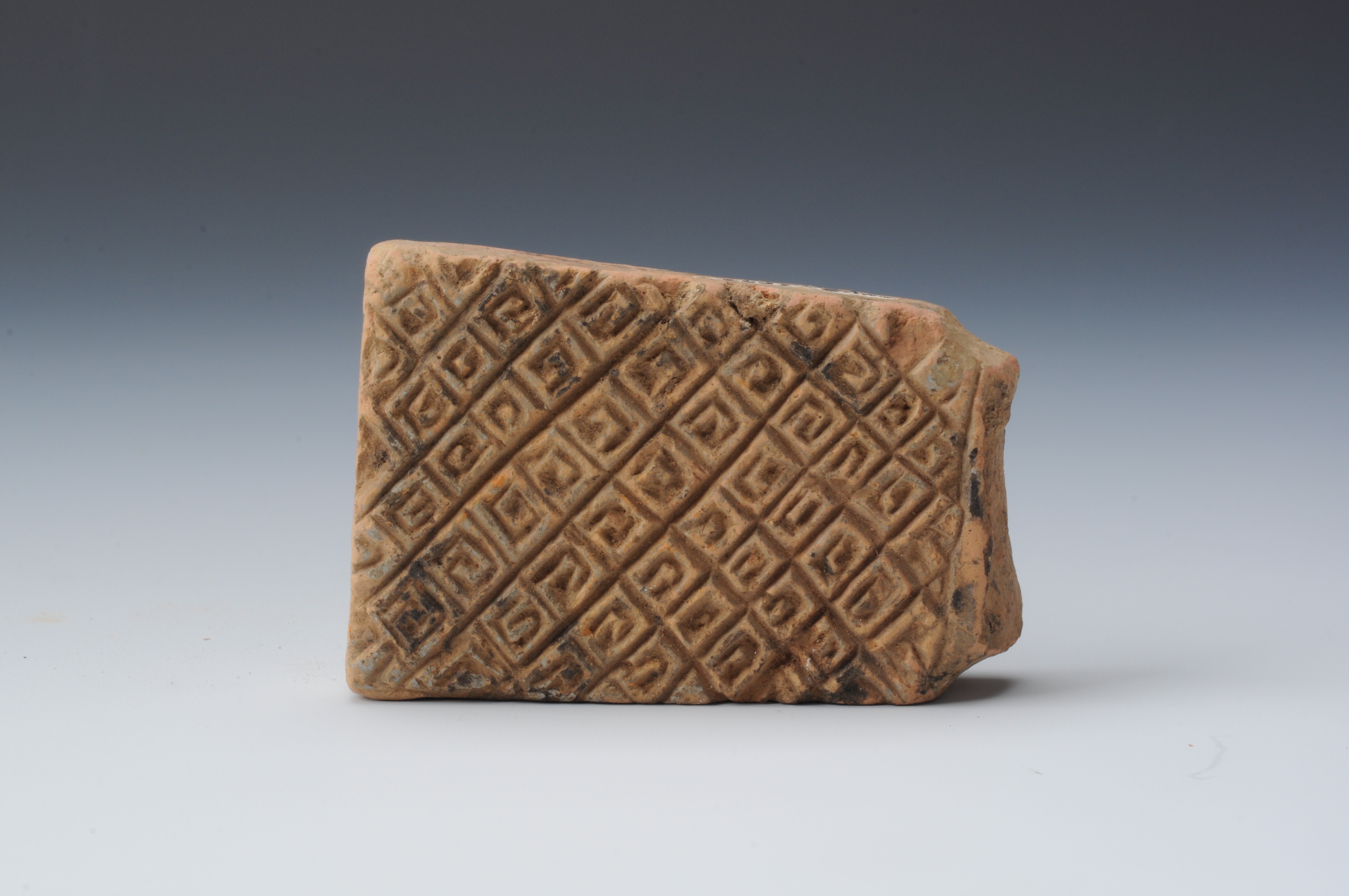
陶垫,也称制陶抵手。它的形状多为上面平,下为半球形,在平的这面中部有细圆柱近似杵形的手柄,倒着看形状很像个蘑菇。角山窑址中出土的不少较大型器物内壁凹凸不平,普遍留有垫窝,这就是陶垫使用后留下的痕迹。
Pottery pads, work as a aid while making pottery. Its shape is mostly flat at the top and hemispherical at the bottom. In the middle of the flat side, there is a thin cylindrical pestle-shaped handle, which looks like a mushroom when viewed inverted. Many of the larger objects excavated from the Jiaoshan kiln site have uneven inner walls and generally have pad pits, which are the traces left by the use of pottery pads.
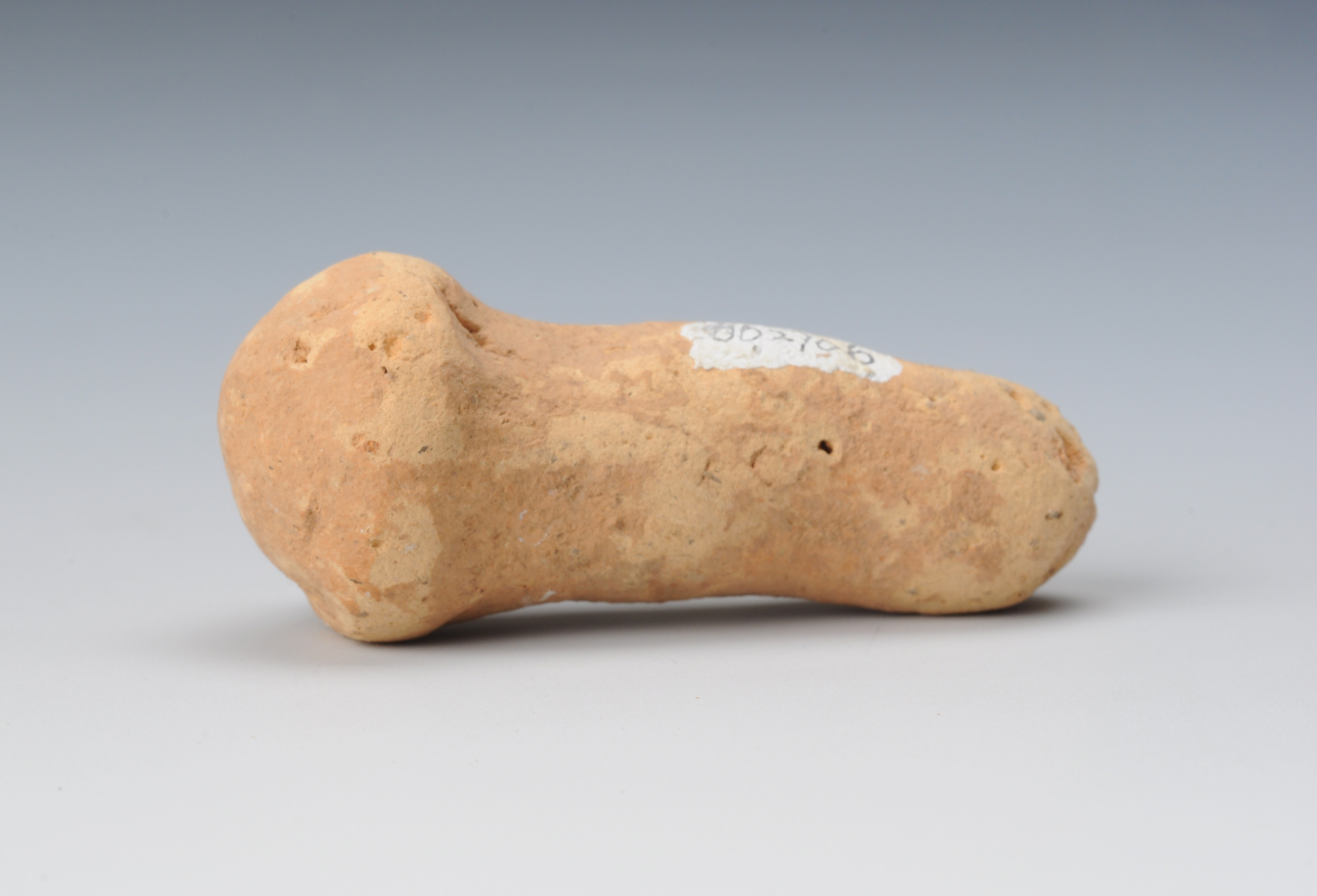
将陶垫放至制好的陶胚内部,在相应的外部拍上纹饰,陶胚外部就出现了纹饰而内部留下了垫窝,用这样使用陶拍、陶垫的方式拍印上几何纹饰,比起刻或挫的方法更简洁方便,纹饰也更工整美观,并且还能起到压实胚体、提升陶器品质的作用。
The pads are placed on the inside of the finished greenware, and pat the ornamentation on the corresponding outside, then, the patterns will be left on the outside of the greenware while the pad pits on the inside. This way of using pottery pats and pads to decorate the greenware is more concise and convenient than the methods of carving, and the patterns are more neat and beautiful. In addition, it can also play a role in compacting the embryo body and improving the quality of the pottery.
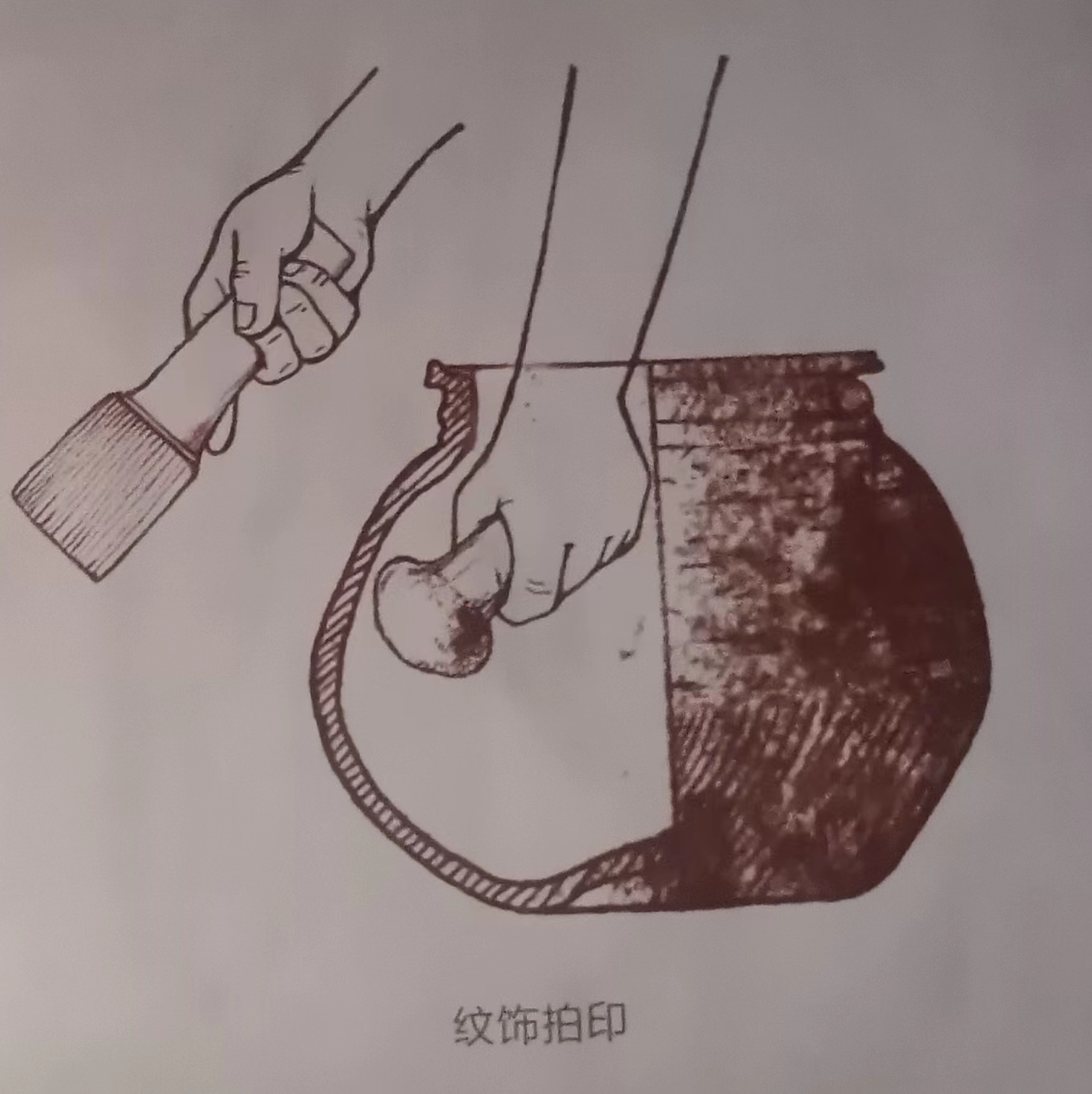
从出土的陶拍、陶垫中可以发现这两种工具的制作都相当精细、考究。特别是陶拍,可能是要多次重复使用的原因,无论是胎质还是火候方面都比其他的器物要好很多,拍面上刻划的纹样也非常精细。无不体现出陶工先民们的智慧及成熟的制作技艺,为后代陶瓷史发展提供了技术基础。
From the excavated pottery pats and pottery pads, it can be found that the production of these two tools are quite exquisite and elaborate, especially the pottery pat. Due to the multiple reuse, pottery pat is much better than other wares, both in terms of fetal quality and control of firing temperature, and the patterns carved on the surface are very elaborate. All of these reflect the wisdom of the ancient potters and their mature production skills, and providing technical basis for the development of the pottery and ceramics history for future generations.
经过长期的发展,在长江中下游和沿海地区的南方,人们开始追求一种全新的陶器,这种陶器具有器形丰富、质地坚硬耐用且纹饰华丽的特点,被称为“几何印纹硬陶”。这里展示了一组印纹硬陶片。印纹硬陶是中国青铜时代长江中下游和东南沿海地区生产的一种质地坚硬、表面拍印几何图案的陶器,质地比传统的陶器更坚硬。装饰纹样更丰富,有云雷纹、篮纹、方格纹、叶脉纹、水波纹等,布局合理,富于变化,动中有静,静中有动,线条或粗或细,或纵向或斜向,或规矩或错落,如行云流水,变幻莫测。
After a long period of development, in the middle and lower reaches of the Yangtze River and in the south of the coastal areas, people began to pursue a new kind of pottery, which was called "geometric stamped hard pottery" because of its rich shape, hard and durable texture and ornate ornamental features. A group of stamped hard pottery pieces are shown here. Stamped hard pottery is a kind of hard pottery produced in the middle and lower reaches of the Yangtze River and the southeastern coastal region of China during the Bronze Age, with geometric patterns on its surface, which is harder in texture than the traditional pottery. The decorative patterns of stamped hard pottery are more abundant, including cloud and lighting pattern, vertical stripe patterns pattern, waffle pattern, leaf vein pattern, wave-shaped pattern, etc. The layout is reasonable and rich in changes, and there is stillness in movement and movement in stillness, with thick or thin lines, or vertical or oblique, or regular or staggered, it is unpredictable, just like moving clouds and flowing water.
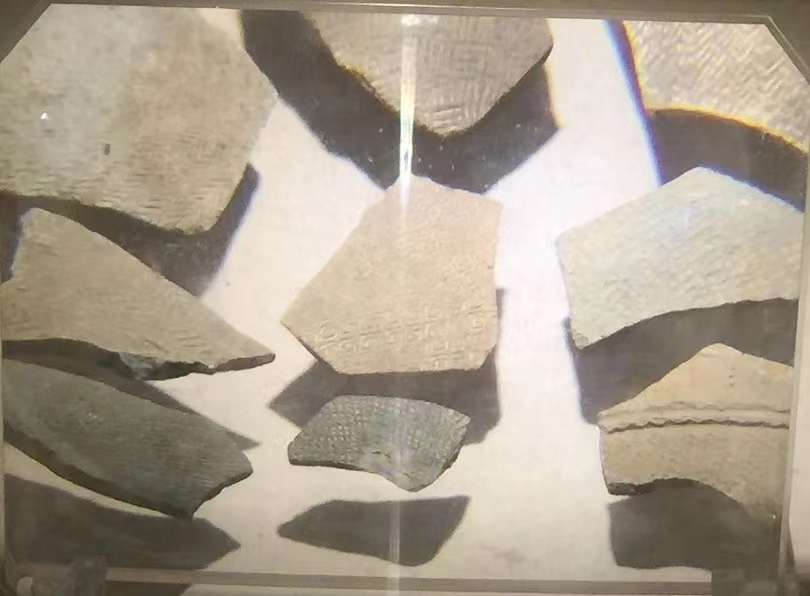
在角山陶器中,最具特色、最具研究价值的是神秘的刻画符号。角山窑场规模宏大,产品种类多,技术成熟。许多产品的口部或底部都刻划有标识或记数符号,目前已发现这类符号三大类84种近2500件(个),数量和种类之多,全国罕见。
Among the Jiaoshan pottery, the most distinctive and valuable to study are the mysterious carved symbols. Jiaoshan kiln is a large scale kiln with variety products and mature technology. Many products are engraved with identifier or counting symbols on the mouth or the bottom. At present, nearly 2500 pieces of 84 kinds in three categories of such symbols have been found, whose quantity and variety are rare in China.
这些刻画符号究竟代表什么意思呢?有人认为这是计算陶器批量生产的数字,五位进制或十位进制;也有人认为这是“南方的甲骨文”,是筮数易卦的另一种表现形式;还有人认为这是制作者为了交换的需要,也为了提高产品的信用度并区分产品的生产者,经营者们就在产品上刻划属于自己的标识符号,以示与他人产品的区别。但究竟何解,至今还没有定论。古文字学者们称“角山商代窑址是中国南方数字文字的研究宝库”。
What exactly do these carved symbols mean? Some believed that they are numbers for calculating the mass production of pottery, in quintuple or decimal. Some believed that they are "Oracle bone inscriptions in the south"--another form of numeral divination. Others believed that this is the need of producers for exchange, and in order to improve the credibility of the product and to distinguish the producer of the product, the proprietors would carve their own symbols on the products to show the difference from other products. But the answer is still up in the air. Paleographers say "the Jiaoshan kiln site of Shang dynasty is a treasure trove for the study of digital writing in southern China".
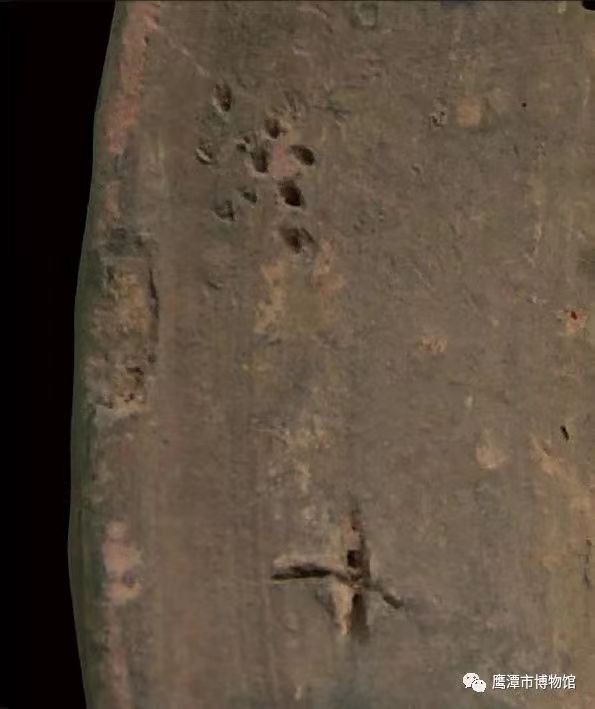
角山窑址作为全国第七批重点文物保护单位是中国历史上最早的一个大窑厂,也是中国先秦时期延续时间最长的窑厂,红红火火连续烧造了800年之久,它见证了鹰潭的荣光,照亮了先秦文明的天空,在中国陶瓷史上留下了浓墨重彩的一笔。它蕴含的不仅是古老的陶瓷文化,还是角山人率先在华夏大地将日常产品打入市场、为社会发展服务的开拓精神,更是江南以使用陶文进入中国历史上第一个文明时代的重要标志。
As the seventh batch of National key cultural relic protection units, Jiaoshan kiln site is the earliest large kiln factory in Chinese history, and it is also the longest kiln site in China's Pre-Qin period. With a continuous burning time of 800 years, it has witnessed the glory of Yingtan and illuminated the sky of pre-Qin civilization, and left a brightest color in the history of Chinese pottery and ceramics. It contains not only the ancient pottery and ceramic culture, but also the pioneering spirit of Jiaoshan people who took the lead in bringing daily products into the market in the land of China and serving for social develo pment. And it is also an important symbol of Jiangnan.

